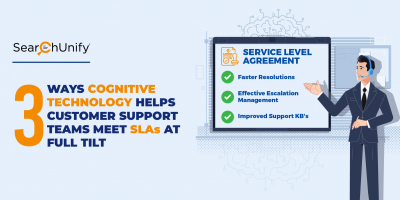
4 out of 10 customers that encounter poor service would advise others to stay away from that business.
Customers jumping ship due to subpar support experience is your worst nightmare coming to life. But irrespective of how airtight your customer service is, there will be cases where customers become unhappy or irate and demand to speak to the higher authority.
Additionally, not all tickets are created equal. Some can be solved easily, whereas others require the intervention of senior agents. Mishandling or overlooking such escalations exacerbates the situation and leads to customer churn. However, if you get it right, your customers are more likely to return and spend more.
Fun Fact: 70% of Americans have spent more money to do business with a company that offers great service.
The need of the hour is a defined process that assigns incoming tickets to appropriate agents right off the bat and ranks them on a priority basis. So, the sooner you get a hold of your escalations, the better. This will not only enhance your CX but also enable you to operate at peak efficiency in the long haul. Below are five strategies for making that happen.
5 Tactics to Devise an Effective Ticket Escalation Process
There are several ways to improve the ticket escalation process, like:
- Document Existing Process: To ensure uniformity and set standards for efficient ticket handling, it is imperative to document the ticket escalation process. Clearly define the priority of incoming tickets based on their impact on customers and the company operations. The process should be repeatable but also flexible enough to adapt to the ever-changing trends.
- Design a Triage Process: The tiered system has gaping holes that can be closed using a seamless routing system. Start with determining the criteria for setting the priority. Ideally, this process should be automated, but to help your employees prioritize tickets manually, make them answer the following questions: What is the issue? Is it common? How many customers or services are affected? Why is it occurring?
- Adhere to Service Level Agreements (SLA): SLAs serve as the blueprint for the escalation process. They clearly define customer expectations in measurable terms while outlining the quality standards that employees must meet. It’s important to ensure that the total time taken to resolve cases is well within the ballpark figures and errors are kept at bay.
According to Service Desk Institute, 76% of support desks have SLAs in place to improve their customer support quality and time to resolution.
- Provide Access to Omnichannel Escalations: If you offer omnichannel support, it’s important to dispense uniform escalation pathways for all appropriate communication channels like SMS, email, phone, and social media. For instance, if a ticket comes in from social media, it should follow a similar escalation path as a ticket from live chat. Additionally, it’s advisable to define the point where the interaction needs to switch channels.
- Keep your Customers in Loop, Always: Sometimes, resolving tickets can be time-consuming. Your customers start waiting for a resolution as soon as they create the ticket. Hence, it makes sense to keep them well informed regarding any roadblock or development. Additionally, customers often forget to add important details to their tickets. So, apprising them of the ticket’s status doesn’t just alleviate their agitation but also expedite problem-solving as you might receive some crucial information.
Imbue AI to Curtail Escalations
We all know how AI and cognitive technology supercharge agent productivity by enabling them to move beyond mundane and rote tasks so that they can focus on complex or high-value items. But did you know that the emerging technology can also empower agents to manage escalations? Here’s how:
- Extracts User Intent and Sentiments: AI leverages the power of Natural Language Processing (NLP) to successfully discern and detect user intent by taking into account text summarization, speed recognition, and semantic analysis. This analysis enables agents to identify dissatisfied customers to empathize and personalize the experience accordingly.
- Facilitates Intelligent Case Triaging: One of the prime reasons for escalations is faulty case assignment. When the case is transferred to the next available agent (as opposed to the best available agent), it results in incessant call transfers, thus frustrating a customer even more.Bid adieu to this round-robin scheduling with SearchUnify’s Escalation Predictor. It analyzes all the incoming requests and factors like historic cases, agent’s expertise, etc. Thereafter, it redirects them to the agents who have successfully handled similar queries in the past to significantly boost FCR and MTTR.
- Provides Proactive Support: Cognitive technology identifies pain points or distress indicators of your users. It analyzes behavioral data and provides actionable insights on these issues that could lead to customer churn. Based on these learnings, you can create help articles, FAQs, or videos to guide customers and nip the problem in the bud.Additionally, AI-powered apps like Agent Helper are your support reps’ perfect ally. They leverage ML to learn from historical data and surfaces case resolving data for every incoming ticket, thus helping you provide proactive support.
Looking for the Perfect Ally for Your Support Reps?
If you’re looking for a technology that quashes everyday agent challenges and empowers them to provide seamless customer support, then we have a one-stop solution. SearchUnify is a unified cognitive platform that renders unbeatable support outcomes. Want to know more? Then, tune into this webinar with TSIA, Building the Ultimate Agent Desktop, and learn the ropes to offering a top-notch CX.
















